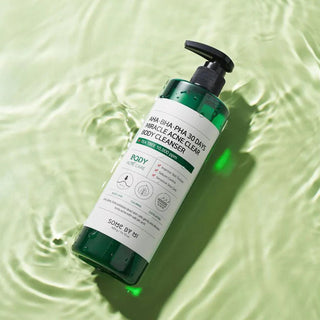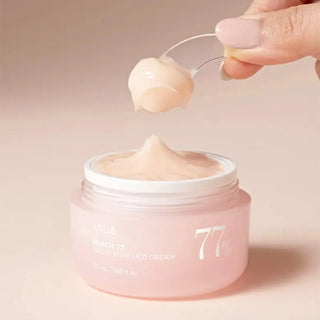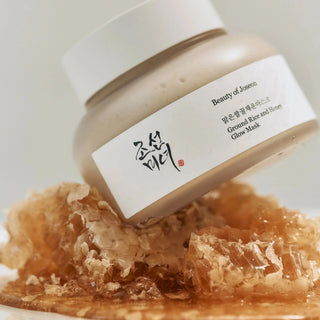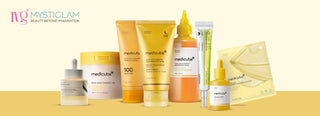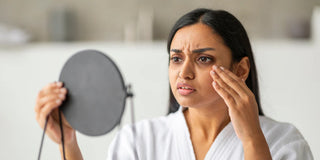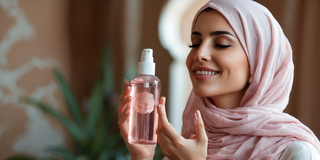Exfoliation is a core step in effective skincare. It clears away dead cells that dull the complexion and helps other products absorb better. But exfoliation is not one-size-fits-all. The right frequency depends on your skin type, the method you use, and other treatments in your routine. Getting this balance right prevents irritation and supports a healthy skin barrier.
Regular exfoliation helps your skin stay soft, radiant, and well-balanced. It eliminates accumulated dead cells, revealing fresher, revitalized skin underneath. Many people often wonder, “How often should I exfoliate my face?”, especially with so many products available today. The truth is that the right frequency depends on your skin type, sensitivity, and the kind of exfoliant you use.
In this guide, you will learn about exfoliation, the differences between physical and chemical methods, how many times a week you should exfoliate your face, signs of over-exfoliation, and safe step-by-step techniques to keep your skin smooth and resilient.
What Is Exfoliation?
Exfoliation clears away the top layer of dead cells, unveiling fresher skin beneath. It can improve texture, reduce clogged pores, and restore a brighter tone. When used correctly, exfoliation also speeds up cell turnover, helping you maintain a clearer surface and better product performance.
Physical Exfoliation Vs Chemical Exfoliation
Physical exfoliants use manual friction to dislodge dead cells. Chemical exfoliants use acids or enzymes to dissolve the bonds that hold dead cells in place. Both methods clear buildup, but they act in different ways and suit different skin types.
Types of Exfoliants and How They Work
1. Physical Exfoliants (Scrubs, Brushes)
When to Use Them
Use mild physical scrubs for occasional use on skin that tolerates gentle abrasion. They are useful when you want a tactile cleanse or to remove surface flakiness.
Precautions
Avoid harsh particles that can cause micro-tears. Do not use vigorous scrubbing on inflamed, sunburned, or sensitive skin.
2. Chemical Exfoliants (AHAs, BHAs, Enzymes)
AHA (Glycolic, Lactic): Best for Surface Texture
AHAs loosen cell bonds at the skin surface and work well for improving rough texture and dullness. Lactic acid is milder and suited to dry or mature skin.
BHA (Salicylic): Best for Pores and Oily Skin
Salicylic acid penetrates pores to dissolve sebum and unclog congestion. It is useful for oily or acne-prone skin.
Enzymatic Exfoliants: Gentle Option for Sensitive Skin
Enzymes break down dead cells with lower irritation risk, making them a suitable choice for sensitive skin types.
How Often Can You Exfoliate Your Skin Based on Skin Type?
Frequency varies by skin needs. Use the guidelines below and adjust based on how your skin responds.
Normal Skin
For balanced skin, exfoliating two to three times per week supports smoothness and a bright appearance without overdoing it.
Oily and Acne-Prone Skin
Oily skin can tolerate more frequent exfoliation. Two to three times per week is a good starting point. Some people use BHA products up to four times per week if they do not experience irritation.
If you are worried about acne scarring, find the best acne scar treatment at our online store. Our professional-grade acne solutions can help you exfoliate safely and effectively. Check out our catalog today!
Dry And Dehydrated Skin
Dry or dehydrated skin should be gentler. Limit exfoliation to once or twice per week and choose mild options like lactic acid or enzymatic exfoliants to avoid worsening dryness.
Combination Skin
Combination skin benefits from a tailored approach. Exfoliate the oilier zones two to three times per week while treating drier areas with less frequent, milder methods.
Sensitive or Reactive Skin
Sensitive skin needs the most caution. Start with once per week and select low-irritation options such as enzyme exfoliants or very low concentration AHAs or PHAs.
How Lifestyle Factors Can Change Your Exfoliation Frequency
Seasonal Changes
Skin often needs less exfoliation in dry, cooler months and can tolerate slightly more in humid, warmer months. Adjust frequency with the seasons to keep the barrier intact.
Lifestyle Factors (Exercise, Pollution, Air Conditioning)
Frequent sweating, heavy pollution exposure, or extended time in air conditioning can increase surface buildup. In those situations, a gentle increase in frequency may help, but monitor skin for signs of stress.
Use of Active Treatments (Retinoids, Acids)
If you use retinoids or other potent actives, reduce exfoliation frequency. Combining strong actives with frequent exfoliation increases sensitivity and risk of barrier damage.
Common Symptoms of Over-Exfoliated Skin
· Visible Red Flags
Watch for redness, stinging, excessive dryness, persistent peeling, or tightness. These are signs you need to pause and let the skin recover.
· Long-Term Consequences
Excessive exfoliation may harm your skin's protective barrier, leading to chronic sensitivity, inflammation, and more frequent breakouts. Repairing the barrier can take weeks and requires stopping aggressive treatments.
How to Exfoliate Properly: Step-By-Step
Pre-Exfoliation Prep (Cleanse, Assess Skin)
To remove surface oils and makeup, start with a gentle cleanser. Assess your skin for active irritation. If you see visible inflammation, skip exfoliation that day.
Application Guidelines for Physical Exfoliants
Use a soft touch. Apply in light, circular motions for no more than 30 seconds. Rinse thoroughly and follow with soothing hydration.
Application Guidelines for Chemical Exfoliants
Apply as directed on the product label. Many leave-on acids work best on dry skin after cleansing. Start with a lower concentration and hold off on layered actives the same night. Neutralize or rinse if the product instructions require it.
Post-Exfoliation Care (Hydration, Barrier Repair, Sunscreen)
After exfoliation, apply a hydrating serum or moisturizer that contains ceramides, glycerin, or hyaluronic acid to restore moisture. Exfoliation increases sun sensitivity, so use a broad-spectrum sunscreen the next morning.
Tips for Safe and Effective Exfoliation
- Patch Test New Products: Test on a small area for a few days before full-face use.
- Start Slow with New Acids: Begin with once per week and increase gradually as tolerated.
- Avoid Mixing Strong Actives On the Same Night: Give your skin time to adapt and avoid combining retinoids with potent acids at once.
- Hydrate and Protect with SPF: Always moisturize after exfoliation and apply sunscreen the following day to prevent sun-related damage.
- Use Gentle Amounts: Apply only a pea-sized amount of potent products. More is not better here.
- Monitor Your Skin Regularly: Adjust frequency if you notice increased sensitivity or dryness.
- Consult A Professional for Complex Concerns: If you have conditions such as rosacea or severe acne, seek personalized advice from a dermatologist.
Conclusion
Knowing how often to scrub the face comes down to your skin type, the method you use, and how your skin reacts. For most people, exfoliating one to three times a week is effective. Oily skin may require more frequent treatment. Dry and sensitive skin needs a gentler pace. Pay close attention to signs of over-exfoliation and always follow with hydration and sunscreen to protect and repair the barrier. Careful, consistent practices deliver lasting improvements without compromising skin health.
Explore a curated selection of gentle options when you shop for Korean beauty products online in the UAE from our online store. We offer everything, including beginner-friendly exfoliants and daily essentials. Order now!


